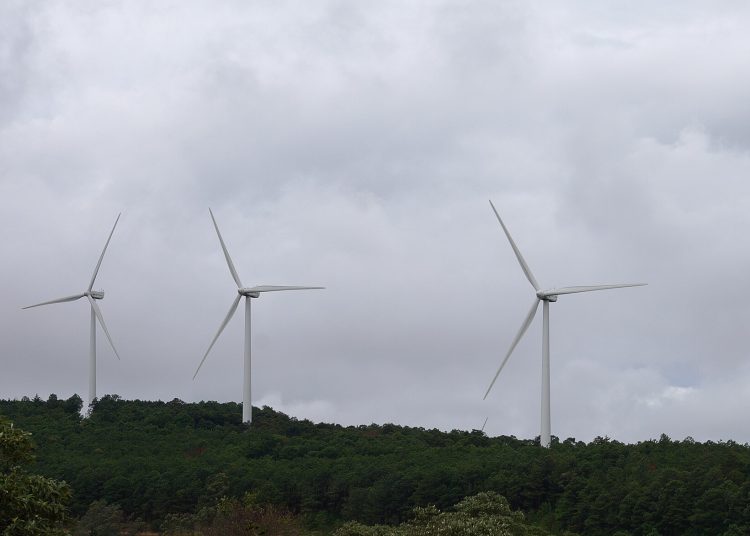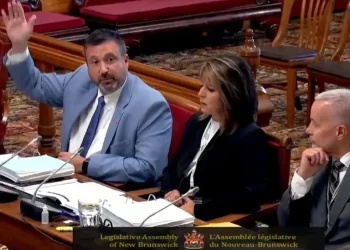The Holt government’s review of NB Power is a fitting time to highlight some of the many Indigenous renewable energy projects in the province. The Burchill Wind project near Lorneville, a significant milestone in sustainable energy development and Indigenous collaboration, should serve as inspiration when we plan our energy future.
Operational since June 2023, this 10-turbine wind farm can produce up to 42 megawatts of renewable energy. The power is sold to Saint John Energy, a municipally owned company that supplies electricity to the City of Saint John.
Burchill Wind is a working partnership between Natural Forces, a Halifax-based renewable energy company, and Neqotkuk (Tobique First Nation), the majority owner.
This collaboration underscores Neqotkuk’s commitment to environmental stewardship and economic development. In an interview with radio station Country 94.1, Neqotkuk Chief Ross Perley emphasized the project’s significance: [Saint John] “is part of our unceded Wolastoqey territory. We’ve got reserve here, the Brothers Islands, but we’ve never really had a footprint for business, for economic development, for relationship building with the city.”
Too often, Perley remarked in the interview, support is lacking from the government for renewable project development in partnership with First Nation communities. The Chief hopes that the Burchill Wind Project will serve as a positive and successful example to draw inspiration from.
The federal government has acknowledged and supported this Indigenous-led initiative by investing nearly $50 million through Natural Resources Canada’s Smart Renewables and Electrification Pathways Program. This program supports Canada’s stated goal of a decarbonized electricity grid by 2035.
More recently, in late 2024 the federal government announced up to $1 billion for wind projects in New Brunswick – many having partnerships with Indigenous communities.
This is not the first Natural Forces and Neqotkuk collaboration. Indeed, the two previously partnered on the Wocawson Wind Energy Project on the outskirts of Sussex, in operation since December 2020. This smaller project with five turbines has an installed capacity of 20 megawatts.
The Burchill Wind Project is expected to supply about 15 percent of the City of Saint John’s energy needs, providing clean power for over 10,000 homes annually. The 25-year power purchase agreement with Saint John Energy ensures long-term community benefits.
In March 2024, Burchill Wind further enhanced its capabilities by adding the largest battery energy storage system in New Brunswick.This system stores variable electricity generated by the turbines, ensuring a stable energy supply even when wind conditions are unfavourable for power production. Wind energy, paired with storage, can provide secure, reliable electricity, eliminating the need for other power sources that emit greenhouse gases.
Beyond energy production, the project honours Indigenous heritage by naming the access road “Pisunawtik Road,” which means “Medicine Road” in Wolastoquey language. This name serves to reflect on the traditional use of the land for medicine and highlights the continuous and strong relationship between the Wolastoquey and their land.
The Burchill Wind Project is an example of Indigenous and industry collaboration on sustainable energy development. Through this endeavour, the First Nation community has economic opportunity and a prominent role in the sustainable energy transition. Burchill Wind inspires visions of sustainable and just energy futures.
Emma Fackenthall is a research assistant for the CEDAR project at St. Thomas University in Fredericton, New Brunswick.









![Is pollution from industry causing the neurological disease ALS in New Brunswick? [video]](https://nbmediacoop.org/wp-content/uploads/2025/10/Quintin-Soloviev-Belledune_Generating_Station_in_New_Brunswick_Canada-120x86.jpg)
